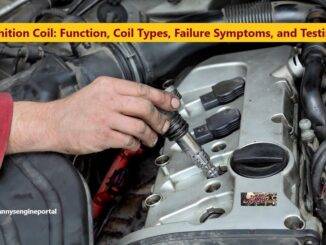
A visual inspection of the spark plug color will display symptoms, and conditions of what’s happening inside your engine.
So, the experienced technician, can analyze the plugs, and track down the root cause of many problems.
Most importantly, being able to read this information properly, can be like having a window into your engine.
So, some of the symptoms, shown by your spark plug color, have simple fixes.
But, the main advantage to checking out your spark plug color, is for a quick diagnostic tool. As a result, giving you a fairly good idea, of how well your engine is performing. And, this can be do by almost anyone.
So, What Should A Normal Spark Plug Color Look Like

Now, Compare Your Spark Plug Color To The Samples Below
Also, Check Out The Symptoms and Suggested Recommendations

The Color, Can Also Show Abnormal Combustion:
Pre-ignition:
So, pre-ignition can cause fatal damage to an engine. As, it creates too much pressure inside the cylinder, too soon. Then, the piston is compressing already heated, expanding gases.
Any number of things can cause pre-ignition. Including: a cracked spark plug tip, carbon or lead deposits in the combustion chamber, and a burned exhaust valve.
Also, pre-ignition is often confused with detonation. But, they are actually different events. Both, are considered abnormal combustion, and can be extremely bad for an engine.
Above All, Pre-ignition And Detonation, Are Two Different Spark Plug Colors And Are Separate Events.
Detonation:
The spark plugs, worst enemy! (besides fouling). So, during normal combustion, the spark plug ignites the “air fuel” mixture. Then, burns steadily as the piston moves down the cylinder.
In contrast, detonation occurs when the “air fuel” mixture explodes, after the spark plug fires. Causing a sudden increase in cylinder pressure. This explosion can damage engine parts, such as the piston, valves, and spark plugs.
Misfires:
So, A Spark Plug Can Deliver, A Weak Spark (or no spark at all) For A Variety Of Reasons:
- First, check the spark plug color.
- Defective coil, too much compression, and the wrong spark plug gap.
- Dry fouled or wet fouled spark plugs, and not enough ignition timing.
- Slight misfires, can cause a loss of performance for obvious reasons.
- Severe misfires will cause poor fuel economy, poor driveability, and can lead to engine damage.
Fouling:
- Will occur when, the spark plug tip temperature is not enough to burn off carbon, fuel, oil or other deposits.
- Will cause spark to leach to metal shell. So, no spark across the spark plug gap, will cause a misfire.
- Wet-fouled spark plugs, must be changed or the spark plugs will not fire.
- Dry-fouled spark plugs, can sometimes be cleaned. Usually, by bringing the engine up to operating temperature.
- So, be sure to eliminate, the root cause of fouling, before changing fouled spark plugs.
Conclusion
So, a visual inspection of the spark plug color, will display symptoms and conditions of the engine’s performance. Furthermore, it is important to remember that spark plugs, do not create heat, they can only remove heat. The spark plug works as a heat exchanger, by pulling unwanted thermal energy, away from the combustion chamber. As a result, transferring the heat, to the engine’s cooling system.
BY DANNY BENDER




